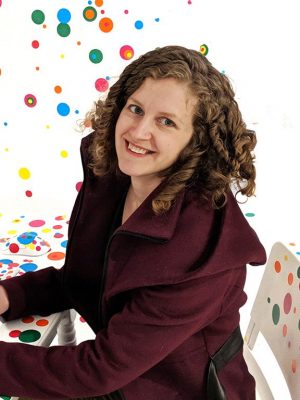
Maria Shugrina
University of Toronto
PhD Student
Maria Shugrina is a PhD student at the University of Toronto. She started out her career as a software engineer and has also published papers at SIGGRAPH, CHI, CVPR, ICCV, HLT NAACL, and Expressive/NPAR. Maria was born in Novosibirsk, Russia and, as many Russian Marias, prefers to be called Masha. After graduating with a Bachelor’s in Computer Science from Boston University, Masha joined Google, where she worked on Speech Recognition and crowdsourcing for Google Maps. She left the role of senior software engineer and tech lead 5 years later to pursue her interest in computer graphics. Masha earned her Master’s from MIT in 2015, while doing research at the Computational Fabrication Lab led by Wojciech Matusik. Following this, she transitioned to working on innovative creative applications as a Research Engineer at Adobe Research. There she led the Playful Palette project and supported a number of other research efforts. Finally, she decided to pursue her PhD at the University of Toronto, focusing on both computer graphics and machine learning under the supervision of Karan Singh and Sanja Fidler. Masha is also affiliated with the Vector Institute and works part time at NVIDA’s Toronto AI Lab. She is planning to defend her Doctorate in the spring of 2020.
Research Abstract:
The goal of my research is to drive a new generation of creativity supporting tools for design, animation and communication. Creativity support is not a niche application. Human beings are fundamentally creative. Today, given ubiquitous personal computing and the advent of AI, we have an unprecedented power to invent new creative media.
My approach to this research area rests on the following design principles. First, designing for creativity means designing for play. Though proven important for the creative process, playfulness is often overlooked in the design of software. By focusing on playful interactions my research aims to bring more awareness to this aspect of user experience. Second, creative tools should evolve into intelligent assistants. I will focus on designing AI/ML algorithms that provide sufficient control to support creativity and naturally fit into the interactive loop. My long term goal is to shepherd AI assistants able to infer low-level actions from high-level multimodal input. Third, to be useful, research on creativity tools must be practical enough to reach real users. By considering practical matters early, I will choose to pursue solutions that have a greater chance to impact the tools we use, now or in the years to come.
Truly novel creative media with intelligent assistance can have a transformative effect on society, on the things we make and the ways we communicate ideas.